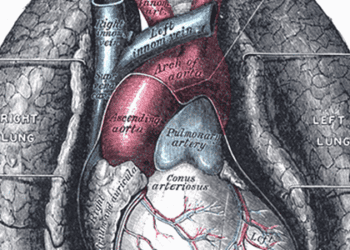Ultrasound ablation of globus pallidus reduces Parkinson’s disease motor symptoms
1. In this randomized controlled trial, ultrasound ablation of the globus pallidus was associated with reduced movement impairment in patients with Parkinson’s disease (PD).
2. The procedure was associated with adverse events, including abnormal gait, dysarthria, and sensory disturbances.
Evidence Rating Level: 1 (Excellent)
Study Rundown: PD is a degenerative condition of the central nervous system that results in motor dysfunction and late-stage cognitive decline. Current medications, namely levodopa, can reduce symptoms. Although, as the disease progresses, its response to medical therapy declines. Invasive procedures to ablate the globus pallidus internus, either unilaterally or bilaterally, such as stereotactic pallidotomy and deep-brain stimulation, have shown efficacy in reducing dyskinesia and improving motor function in off-medication patients. Nevertheless, given the procedural risks, forced ultrasound ablation (FUSA) has been proposed as a non-invasive alternative. The current study investigated the efficacy and safety of unilateral FUSA of the pallidum globus in off-medication patients with PD. At three months, compared to the sham procedure, ultrasound ablation resulted in a higher proportion of patients demonstrating reduced motor symptoms and improved motor function. A proportion of these responders showed sustained improvement at 12 months. The procedure was associated with a higher rate of adverse neurologic effects. The trial was limited by its small sample size and missing data. However, these preliminary results showed ultrasound ablation held promise in treating patients with PD.
Click here to read the study in NEJM
In-Depth [randomized controlled trial]: The current study was a randomized, sham-controlled trial to assess the efficacy and safety of unilateral FUSA of the globus pallidus internus for patients with medication-resistant PD. Patients 30 years of age or older with confirmed idiopathic PD that responded to levodopa, with persisting dyskinesia and motor fluctuation as measured by the part III of the Movement Disorders Society-Unified PD Rating Scale (MDS-UPDRS III), were included. Exclusion criteria included severe disability in the on-medication state, other neurodegenerative diseases, previous deep-brain stimulation, or impaired cognition. A total of 94 patients were randomized 3:1 to receive unilateral FUSA of the globus pallidus internus (active treatment) or the sham procedure (control) on the contralateral side to the side of dominant motor impairment. The primary outcome was a three-month response, defined as a reduction of at least 3 points on the MDS-UPDRS III from baseline in the off-medication state or on the Unified Dyskinesia Rating Scale (UDysRS) in the on-medication state. Overall, 69% of participants in the active-treatment group showed a response, compared to 32% of the control group, a difference of 37 percentage points (95% Confidence Interval [CI] 15 to 60; p=0.003). Of the 45 participants showing a response in the active-treatment group, 19 responded on the MDS-UPDRS III only, eight responded on the UDysRS only, and 18 responded on both scales. Of the 39 patients in the active-treatment group who demonstrated a response at three months, 30 continued to report a response at one year. Patients receiving active treatment were more likely to experience serious adverse events. These results showed that unilateral FUSA of the globus pallidus could improve motor symptoms in PD patients.
Image: PD
©2023 2 Minute Medicine, Inc. All rights reserved. No works may be reproduced without expressed written consent from 2 Minute Medicine, Inc. Inquire about licensing here. No article should be construed as medical advice and is not intended as such by the authors or by 2 Minute Medicine, Inc.







